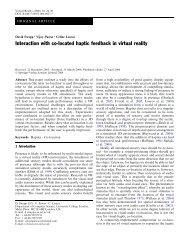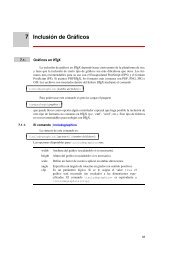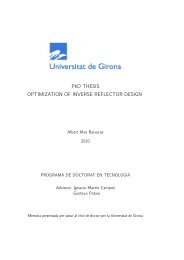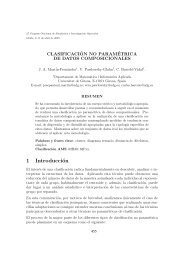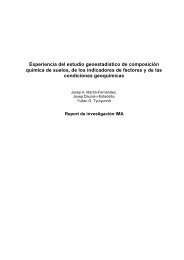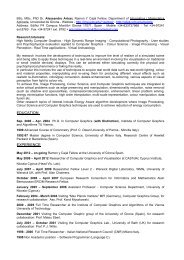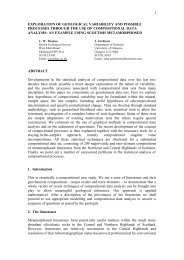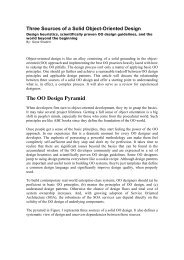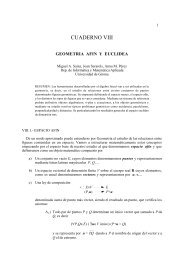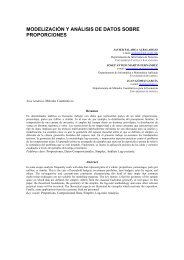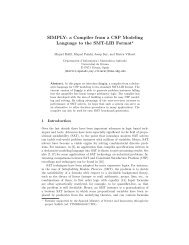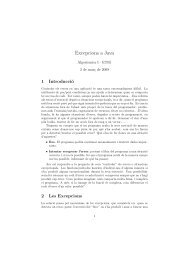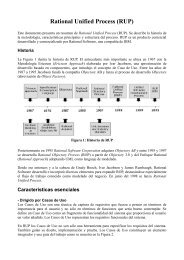Cuaderno III: Estructuras algebraicas.
Cuaderno III: Estructuras algebraicas.
Cuaderno III: Estructuras algebraicas.
Create successful ePaper yourself
Turn your PDF publications into a flip-book with our unique Google optimized e-Paper software.
40<br />
y para la función<br />
tendremos<br />
f : B 3 B<br />
(x 1 ,x 2 ,x 3 ) f(x 1 ,x 2 ,x 3 ) = x 1 +x 2 '·x 3 +x 3 '·x 1 '<br />
x 1 x 2 x 3 (x 1 + x 2 ' · x 3 ) + x 3 ' · x 1 '<br />
⎯⎯⎯⎯⎯⎯⎯⎯⎯⎯⎯⎯⎯⎯⎯⎯⎯⎯<br />
0 0 0 0 1 0 1 1 1 1<br />
0 0 1 1 1 1 1 0 0 1<br />
0 1 0 0 0 0 1 1 1 1<br />
0 1 1 0 0 0 0 0 0 1<br />
1 0 0 1 1 0 1 1 0 0<br />
1 0 1 1 1 1 1 0 0 0<br />
1 1 0 1 0 0 1 1 0 0<br />
1 1 1 1 0 0 1 0 0 0<br />
En el caso de una función de n variables sobre el álgebra binaria es sencillo obtener a partir<br />
de su tabla de verificación la forma normal conjuntiva o disyuntiva. Dada la función<br />
f : B n B<br />
(x 1 ,...,x n ) f(x 1 ,...,x n )<br />
pongamos f(x 1 ,x 2 ,...,x n ) = x 1· r+x ' 1·s, siendo r y s dos funciones booleanas, que podemos<br />
calcular haciendo<br />
por lo cual<br />
x 1 = 1 x 1 ' = 0 ⇒ f(1,x 2 ,...,x n ) = 1·r+0 ·s = r<br />
x 1 = 0 x 1 ' = 1 ⇒ f(0,x 2 ,...,x n ) = 0·r+1·s = s<br />
f(x 1 ,x 2 ,...,x n ) = x 1·f(1,x 2 ,...,x n )+x 1 '·f(0,x 2 ,...,x n )<br />
Análogamente para f(1,x 2 ,...,x n ) = x2·r+x 2 '·s, calculando ahora r y s haciendo como antes<br />
por lo cual<br />
x 2 = 1 x 2 ' = 0 ⇒ f(1,1,...,x n ) = 1·r+0·s = r<br />
x 2 = 0 x 2 ' = 1 ⇒ f(1,0,...,x n ) = 0·r+1·s = s<br />
f(1,x 2 ,...,x n ) = x 2·f(1,1,...,x n )+x 2 '·f(1,0,...,x n )<br />
y para f(0,x 2 ,...,x n ) poniendo f(0,x 2 ,...,x n ) = x 2·r+x' 2·s, calculando ahora r y s, haciendo<br />
x 2 = 1 x 2 ' = 0 ⇒ f(0,1,...,x n ) = 1·r+0·s = r<br />
x 2 = 0 x 2 ' = 1 ⇒ f(0,0,...,x n ) = 0·r+1·s = s



